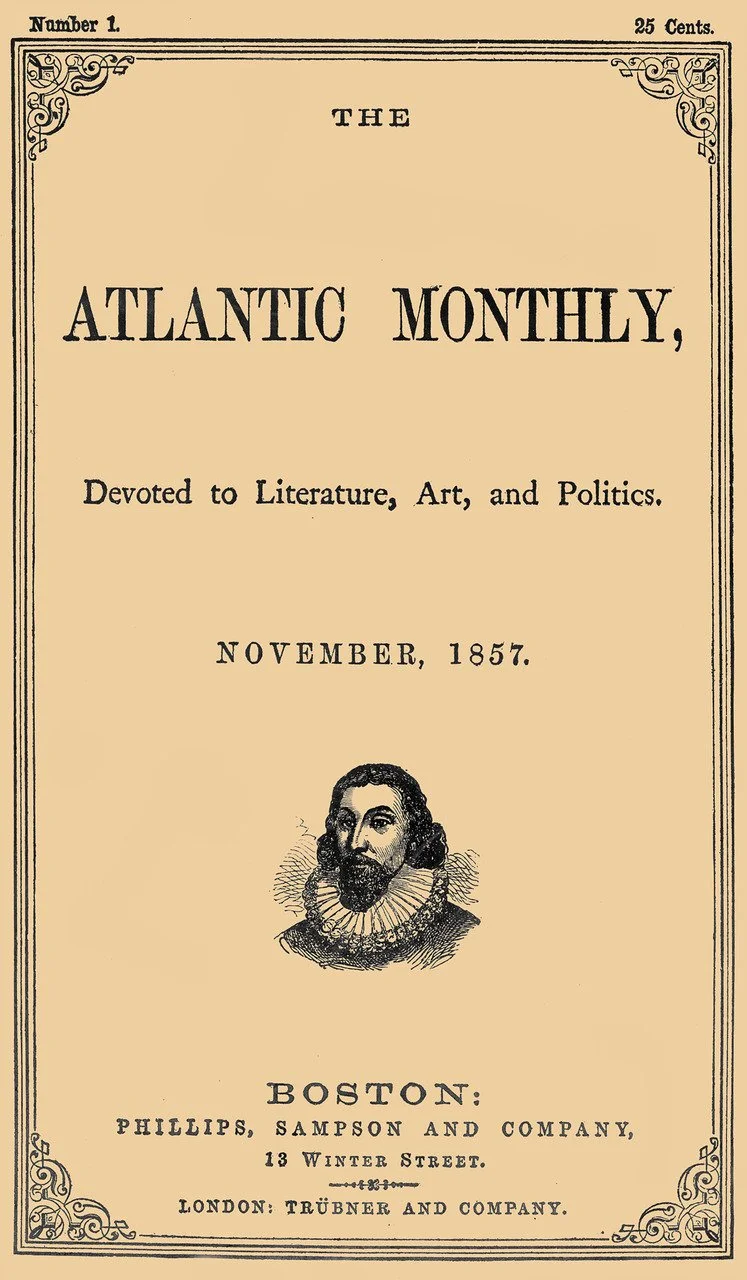
The Lyceum
A gathering place for engaging Emersonian content to educate & entertain.
Emerson’s Daughters
Kate Culkin’s new book, Emerson’s Daughters: Ellen Tucker Emerson, Edith Emerson Forbes, and Their Family Legacy (University of Massachusetts Press, July 2025), is a dual biography of the sisters who worked behind the scenes to shape the image of their famous father. In honor of the book’s release this month, the Emerson House will be showcasing items from our Ellen and Edith collections, some of which will be on display to the public for the first time.
Discover Concord
To read more about the people and places of Concord, Massachusetts, we invite you to explore the current and back issues of Discover Concord, a visitor-focused magazine available in print and online. The Emersons and their friends are frequent subjects of articles, some of which are penned by our own Emerson House guides.
Sarah Alden Bradford Ripley
Introducing another of the strong women in Ralph Waldo Emerson’s life with a profile of his aunt Sarah Alden Bradford Ripley, a scholar and educator who was a lifelong friend and one of his staunchest supporters. Sarah loved learning and continued her own broad studies while caring for a growing family and working as an esteemed teacher. She was one of the five female members of the Transcendental Club.
Henry David Thoreau: Surveyor of the Soul
In his 2017 documentary film Henry David Thoreau: Surveyor of the Soul, Huey Coleman tells the story of Thoreau in his time and of the impact Thoreau’s writings and lifestyle have in our time. The film will be broadcast on Maine Public Television again this week and is also available to stream on demand.
Emerson’s Study
When the Ralph Waldo Emerson Memorial Association (RWEMA) took ownership of the Emerson House in 1930 and turned it into a seasonal museum, the original contents of Emerson’s study were moved across the street to a replica in the Concord Museum to preserve year-round access for visitors. Today, both can be visited. In 2020, the Concord Museum produced a short video tour of Emerson’s home study, discussing its importance both to Emerson and as the intellectual center of mid-19th century America.
Margaret Fuller
The friendship between two intellectual powerhouses of the mid-nineteenth century—Margaret Fuller and Ralph Waldo Emerson—began with a visit to Concord in 1836. Fuller later joined the “Transcendental Club” and her book Woman in the Nineteenth Century—the first major feminist work in America—grew from an essay published in The Dial magazine under Emerson’s editorship.
Mary Moody Emerson
Beginning a series on the strong women in Ralph Waldo Emerson’s life with a profile of his Aunt Mary Moody Emerson, who helped raise him after his father died and had a profound influence on his life and works. Credited as being his “earliest and best teacher,” Mary laid the foundation of Transcendentalism for her nephew and was an inspired writer in her own right. She was also active in the antislavery and women’s rights movements.
Frequently Asked Questions
Emerson House guides share answers to some of the frequently asked questions by visitors to the house.
Christopher Cranch: Transcendentalist, Artist, and Follower of Emerson
Reprinted from The Public Domain Review, this essay explores the friendship of Transcendentalist illustrator Christopher Cranch and Ralph Waldo Emerson. Cranch’s collection of humorous sketches inspired by phrases from Emerson’s Nature—including his famed “transparent eyeball” drawing—is considered one of his greatest achievements.
Emerson and Thoreau: Companions on a Journey of Self-Discovery
Emerson and Thoreau met in the spring of 1837 and became lifelong friends. In addition to their affinity for Concord, they shared a strong belief in the importance of nature in developing creative and independent thinking. Thoreau lived with the Emerson family for several years and built the cabin of Walden on land owned by Emerson.
The American Scholar: Emerson’s Call to Awaken American Thought
An examination of the themes and context of Emerson’s momentous 1837 speech, "An Oration, Delivered before the Phi Beta Kappa Society at Cambridge,” later retitled “The American Scholar.” At the time, Emerson was just embarking on his remarkable 40-year career as an essayist, poet and speaker. His mind was racing with new ideas designed to increase individual expression and promote the importance of nature to thought and literature, and the Transcendental Club was founded soon thereafter.
Emerson and The Atlantic Monthly
In the spring of 1857, a group of like-minded men met at Boston’s Parker House Hotel brainstorming ideas for a new magazine. The co-founders of what would become The Atlantic Monthly included Ralph Waldo Emerson, Henry Wadsworth Longfellow, James Russell Lowell, Oliver Wendell Holmes, and several others. The magazine—now known as The Atlantic—has been published continuously since its first issue in November 1857.












